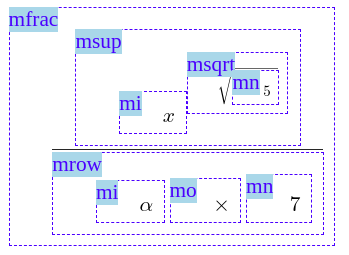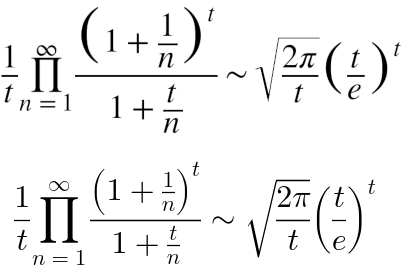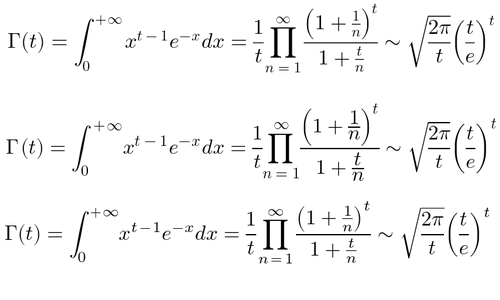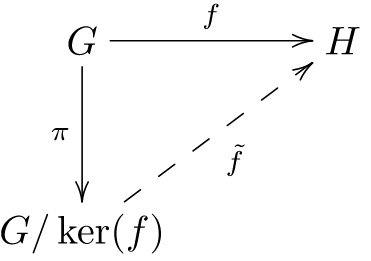mathml-core
MathML Core Explainer
Authors:
- Frédéric Wang
- Brian Kardell
Draft specification:
MathML Core - W3C Editor’s Draft
Abstract
MathML Core is a definition of a fundamental subset of features described in the current MathML 3 recommendation. It attempts to resolve several problems created by MathMLs origins, history and complex status, and properly define its integration in the modern Web Platform in rigorous ways. The specific subset is derived based on what is widely developed, deployed, proven and used in practice.
Table of Contents
Goals
-
To provide users with efficient, natural, readable and high-quality rendering of mathematical notations, consistent with other text they encounter in the browser.
-
To provide authors with native, efficient and interoperable rendering of mathematical notations that they are able to reason about in a manner consistent with the rest of the Web Platform.
-
To rigorously define the necessary subset, how it works and properly integrates into the Web Platform and ensure testable and interoperable implementations.
-
To establish a productive and agreeable starting point for additional work and conversation going forward and make it possible to more easily explore more, consistent with the rest of the platform.
Non-Goals
- To provide a self-contained solution to problems ultimately better explored through another area of the platform.
MathML Core relies as much as possible on existing Web Platform
features and provides a platform-aligned starting point to solve more
problems. Some examples of areas that are specifically not part of MathML Core are:
- Specific elements or attributes for styling which are better described by existing or new CSS features.
- Complete and explicit description of semantics which are better described by extending ARIA.
- Open-ended elements to allow implementation-specific features instead of standard techniques for customizations and extensions.
- Native support for editing, interaction, exploration, simple input syntax or other advanced features that are better handled by DOM/JavaScript and math libraries.
-
Complex graphical layout which can instead be performed by embedding MathML in HTML/CSS or SVG.
Figure 2: Formulas in a commutative diagram.
- To fully explain mathematical rendering via as-yet-to-be-defined low-level primitives. Rather, these serve as inputs to their possible definition and provide valuable insight into needs.
Background: MathML
-
MathML is the standard developed at the W3C in the mid/late-1990’s XML/XHTML era.
-
It received much attention and has created a vibrant ecosystem of implementations and integration outside of web browsers
-
At the time of its development, CSS, the DOM, the way we write specifications, and prove support and interoperability were considerably under-defined. As a result, the MathML specifications contain several co-evolutionary overlapping approaches better solved elsewhere in the modern platform and lack important levels of detail.
-
MathML was supported via a plugin in early IE, it was integrated into the HTML / Parser specifications by WHATWG in the mid-2000’s. All HTML compliant parsers parse MathML specially whether they support anything to do with rendering or not. All browsers (until now) present these uniquely in DOM as simply “Element”. MathML was thus explicitly disadvantaged.
-
It was implemented in Firefox about the same time. It gained an implementation in Webkit shortly before the blink split, when it was removed due to complexity and early issues requiring significant attention while Chrome engineers were trying to rework the engine.
-
Spec-work continued, without browser implementation. As a result, it contains much that is theoretical, including over 150 elements.
Basic example…
The <math> element provides a standard for authors to express and work with text containing generalized relationships about mathematics, in a way very similar to how <table> does for expressing text containing relationships about tabular data.
<math>
<mfrac>
<msup>
<mi>x</mi>
<msqrt>
<mn>5</mn>
</msqrt>
</msup>
<mrow>
<mi>α</mi>
<mo>×</mo>
<mn>7</mn>
</mrow>
</mfrac>
</math>
*Figure 1: MathML/DOM for the above

What is MathML-Core?
MathML Core is an attempt to create a minimal version of MathML that is well aligned with the modern web platform. It aims to resolve long-standing issues with the split evolution of philosophies between MathML specifications and the larger web platform. As part of this aim, MathML Core creates a well-defined starting point based on what is currently widely implemented. By creating a minimal version of MathML, MathML Core has an increased focus on testability and interoperability.
The elements of MathML-Core
MathML 3 contained 195 elements. MathML-Core focuses on just 32. Several of these elements exist in deprecated form and simply exist to map the elements and their attributes to newer concepts (let them explain the actual magic) in much the same way font remains. It provides a recommended UA stylesheet for implementation, and adds a couple of new Math oriented display types.
Here is a brief rundown of what those elements are…
- the
mathelement itself - 3 elements called
semantics,annotationandannotation-xmlwhich simply provide other annotations or potential semantics in existing content but are generally not rendered. - 6 token elements - “Token elements in presentation markup are broadly intended to represent the smallest units of mathematical notation which carry meaning. Tokens are roughly analogous to words in text. However, because of the precise, symbolic nature of mathematical notation, the various categories and properties of token elements figure prominently in MathML markup. By contrast, in textual data, individual words rarely need to be marked up or styled specially.” The token elements are (
mtext,mi(identifier),mn(number),mo(operators in a broad sense),mspace,ms(string literal - for things like computer algebra systems) - Layout/Relationship elements
mrow(for grouping sub-expressions),mfrac(for fractions and fraction-like objects such as binomial coefficients and Legendre symbols),msqrtandmrootfor radicals mstyle(legacy compat, deprecated - just maps to css)merror(legacy compat - displays its contents as an ”error message”. The intent of this element is to provide a standard way for programs that generate MathML from other input to report syntax errors in their input.)maction(legacy compat, deprecated - just use JavaScript/CSS instead).mpadded- a row-like grouping container for modifying its position and bounds. (legacy compat, attributes map to CSS, although attributes are more natural for mathematical layout)mphantom- a co-evolutionary/legacy compat, row-like container that just adds a UA style that maps to visibility: hidden;- 3 elements about subscripts and superscripts
msub,msupandmsubsup - 3 elements about underscripts and overscripts
munder,moverandmunderover - 3 elements about prescripts and tensor indexes (
mmultiscripts,none,mprescripts)` - 3 elements about tabular math such as matricies and determinants (
mtable,mtrandmtd)
Design Discussion
Not reinventing the wheel
-
As explained in the introduction, MathML is already integrated into numerous standards and shipped in two Web engines. Consequently, a new format to replace MathML would be a drastic change of direction and a source of backward compatibility and interoperability issues.
-
For a native mathematical rendering to be possible, it must adhere to modern browser designs and a significant effort is being made to ensure that MathML Core achieves that goal. For example, all browsers use internal tree structures, follow CSS invariants or try to keep code size minimal to facilitate security, maintenance, testing, etc
-
One must not duplicate existing Web Platform features. As explained in the non-goals section, MathML Core tries to rely as much as possible on existing Web Platform concepts from HTML5 or CSS to describe its implementation. Non-fundamental mathematical features that can be easily replaced with polyfills or extensions are removed.
-
Rendering of mathematical formulas follow well-established rendering rules from TeX and OpenType which are integrated into MathML Core. A naive box layout would be enough to get interoperable rendering but is likely to lead to poor spacing, placement or text rendering inside mathematical formulas.
Figure 3: Top: Chrome 23 using MathML3 rules and internal heuristics ; Bottom: Igalia’s Chromium build using only MathML Core rules.

Applying Extensible Web principles
The biggest design decisions centered on how to apply Extensible Web principles in our own work, as MathML sits in a very unique place in history, and how it “fits” into the platform. Not only does it have existing implementations, very wide adoption and expectations and integration through the HTML parser, but we are approaching it while standards that in the future might theoretically expose the magic for mathematical layout, such as the CSS Layout API and related Houdini standards, are still developing and significantly in flux.
In order to balance all of this we decided on the following:
-
Normalize the DOM. Because of when and how it was defined, MathML in all browsers was exposed to the DOM (in all browsers, through the parser) as simply
Element. MathML is historically uniquely disadvantaged in this way. All elements in HTML descend fromHTMLElementor areHTMLUnknownElement. All elements, including SVG, define some common surface (through a mixin which was calledHTMLOrSVGElement). Without remedy, this means that MathML elements lack over 100 bits of API surface. They have no.styleproperty, but are stylable with CSS, for example. This is unpredictable and confusing for authors who come to MathML and fundamentally limiting for the application of any real Extensible Web ideas. Aligning the IDL for MathML with the rest of the platform, however, allows that all of our principles and separations (for example ARIA, AOM, Houdini, etc) can move forward in tandem. -
Acknowledge that some minimal math magic exists in the platform already in two browsers. Our goal then is to not simply block a final implementations of high-level features but to apply Extensible Web principles reasonably and pragmaticaly: Keep it minimal and carefully develop what serves as useful input to the ultimate definition of lower level Houdini APIs.
-
Increase compatibility with CSS. We provide a design compatible with CSS layout and describe how CSS properties are interpreted, so that authors can reliably use them to customize math layout.
-
Where possible, attempt to expose information to authors which would be necessary in polyfilling, libraries or extending the platform through platform consistent mechanisms.
Figure 4: Example of using CSS, JavaScript or the Layout API to enhance MathML Core with user-defined features.
<style>
math {
font-family: STIX Two Math;
color: blue;
}
mfrac {
border: 1px solid dotted;
padding: 1em;
}
.myFancyMathLayout {
display: layout(myFancyMathLayout);
}
</style>
<math>
<mfrac>
<mrow class="myFancyScriptedElement">
...
</mrow>
<mrow onclick="myInteractiveAction()">
...
</mrow>
</mfrac>
</math>
Considered Alternatives
Leave math reliant on SVGs and/or JavaScript libraries
Writing systems define how we share information. Mathematical notations form a fundamental aspect of writing systems. Math is text, and it is a normal part of text: Mathematical notations are found in all civilizations. They have been instrumental throughout history for the diffusion and development of scientific and technical knowledge. The need for browsers to natively render this kind of text was evident from the earliest days of the Web at CERN. We believe that according to the W3C TAG’s Ethical Web Principles it is not good for either the Web, the directly impacted communities of authors, or ultimately society to specially disadvantage such an important aspect of communication.
Abandon MathML in favor some new thing
There are numerous criticisms of MathML. Like all aspects of the existing platform, for example, more succinct forms of expression exist that many authors are more comfortable writing (e.g. linear text syntax used in LaTeX or Computer algebra systems). Like other aspects of the platform, it is also possible to be more semantic than MathML currently provides.
A few things don’t change though and among them is the difficulty in rendering interoperable mathematical formulas with good quality. Abandoning MathML would be a rejection of an entire ecosystem and decades of work in standardization and advancement with little hope that any of the current state would change in any reasonable timeframe. This would be tragic as we don’t generally require that authors use complex libraries in order to layout text, or recommend that they be inserted as images. We believe that getting native math rendering is the right thing to do and that a tree is good.
Why a tree is good…
Trees of text relationships aren’t the most succinct or easy to type ways to express things. However, this is true of all HTML too. That’s why a lot of HTML is generated from simpler forms like markdown or tools like rich text editors or templating. A rich ecosystem of tooling has been developed over many years for generating and editing MathML too.
But expressing the content is only part of the challenge and the platform is heavily oriented toward solving these problems via just such a tree. Many benefits flow naturally from simply matching the platform here and expressing mathematics as a standard tree of relationships:
- Browser implementations can natively handle their rendering, as text, efficiently and fluidly.
- Authors can style individual aspects of the equation, for example for educational purposes.
- Authors can ensure that their text, colors, etc match and scale appropriately
- Authors can create interactivity with those elements or manipulate them (educational purposes are a good example here too)
- Software can be used to derive more meaning from context in much the same way that search engines do (there are in fact, applications that do this)
- We are granted common, platform-fitting places to attach additional semantics through existing mechanisms.
- ‘Find’ text works
Building atop…
Given these abilities and approach, building atop additional semantics, extensions, conversions and further explorations** becomes very plausible. It is even entirely plausible to support shorthand expansion from forms like LaTeX or ASCII Math, in much the same we can for Markdown. Patterns for extending shorthand notations like these are a common class of problem that should be well explored and, still, probably rendered into a Shadow tree natively if ever supported natively.
Figure 5: LaTeX source in a custom element rendered using MathML in a shadow DOM, with the Latin Modern Math font ; From top to bottom: Blink (Igalia’s build), WebKit (r249360) and Gecko (Firefox 68)
<la-tex>
{\Gamma(t)}
= {\int_{0}^{+\infty} x^{t-1} e^{-x} dx}
= {\frac{1}{t}
\prod_{n=1}^\infty
\frac{\left(1+\frac{1}{n}\right)^t}{1+\frac{t}{n}}}
\sim {\sqrt{\frac{2\pi}{t}} \left(\frac{t}{e}\right)^t}
</la-tex>

Focus instead solely on lacking primitives
A big part of the challenge of focusing on lacking primitives is that it leaves open the question of what is lacking. The main proposals here of things to focus on have to do with additional semantics, ‘stretchy characters’ and complex alignments. While we agree that these are all excellent goals, we believe that they are also very independently pursuable, and that both causes are boosted by doing so.
However, without also providing a detailed layout specification, pursuing native rendering in all browsers or performing interoperability tests it becomes very hard to design a full browser-compatible math rendering implementation and to introduce necessary web platform primitives. Thus we again relegate ourselves to the current state of one of the hardest problems in a way that we don’t for other forms of text.
Enhance MathML3 but keep all or most features
Another approach would be to integrate the TeX/OpenType and HTML5/CSS improvements but at the same time preserving all or most features from MathML3. We discarded this approach for several reasons:
-
Some MathML3 features don’t integrate well within the web platform and it is not clear how to keep them and at the same time try to align MathML with browser design. Other features duplicate existing web platform primitives without re-using them. As explained in section “Not reinventing the wheel”, these are strong blockers to get new features accepted. Indeed, many of these have never been implemented in browsers or have been removed.
-
Some MathML3 features have very low or almost null usage. This means it is very difficult to justify effort for implementing them natively and maintaining them while the rest of the codebase evolves. Instead, we prefer to focus on a small subset that is used in practice, and in agreement with Extensible Web principles, add the necessary APIs to let users build extension on top of MathML Core.
-
MathML3 has many features, is underspecified, lacks automated tests and is only partially implemented in browsers. This means that keeping all the features and at the same time achieving interoperability would require a huge effort. Again, the choice was instead to consider a subset of manageable size, corresponding to what is used on web pages and implemented in WebKit and Gecko.
A Note on “Legacy Compat” and “following the platform”
MathML-Core aims to always follow the platform. Where things are noted as included for “Legacy Compat” this refers to the fact that existing, legacy patterns are mapped to their platform counterparts and deprecated. Any support for legacy/coevolutionary (deprecated) attributes just maps to existing platform solutions in the same way that legacy (deprecated) attributes like border might be supported in HTML via a UA style rule. In other words, even supporting the legacy border attribute would be explained by CSS, the box model and the border properties. We’ve chosen to only recommend supporting these kinds of mappings for things which are actually in wide use and only so that existing content keeps working while we expose (functional) platform answers.
Stakeholder Feedback
- …
- …
- …
